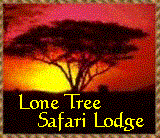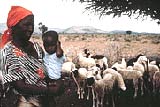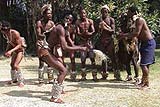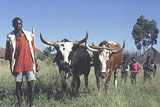

Tswana

Historical Background
The ancestors of the Sotho people entered the area to the south of the Limpopo River in several separate migrations. In the course of time, they were dispersed over the vast interior plateau between the eastern escarpment and the arid western regions to form four subgroups - the Tswana, North Sotho, South Sotho and East Sotho.
 Those who settled in the western regions preferred to be called Batswana (Tswana) while those living in the southern regions called themselves Basotho. Today, the Tswana people live in parts of Gauteng Province, the Northwest Province and the eastern parts of Botswana.
Those who settled in the western regions preferred to be called Batswana (Tswana) while those living in the southern regions called themselves Basotho. Today, the Tswana people live in parts of Gauteng Province, the Northwest Province and the eastern parts of Botswana.
Oral tradition traces the ruling lineage of the Tswana states to the Witwatersrand (Johannesburg) area. Historical evidence suggests that the Tswana states developed on the basis of royal control of cattle and on the profits of mining, manufacture and trade. The lineages of all the ruling Tswana families can be traced back to one of the following ancestors; Morolong, Masilo, and Mokgatla.
Evidence suggests that the ancestors of the Tswana were living on the Highveld (the western, northern and northeastern Witwatersrand area) from at least the 17th century. Up to the 19th century, junior members of chiefdoms would often break away and form their own chiefdoms, splitting the Tswana nation into numerous small chiefdoms and overlapping ‘city’-states.
 Disputes over succession and wars amongst themselves further weakened the unity of the tribe. However, this trend stopped in 1810, with the Mfecane/Difaqane upheavals when the Zulu King, Shaka, created turmoil in the interior of the country, his well-trained Zulu impis annihilating scores of tribes.
Disputes over succession and wars amongst themselves further weakened the unity of the tribe. However, this trend stopped in 1810, with the Mfecane/Difaqane upheavals when the Zulu King, Shaka, created turmoil in the interior of the country, his well-trained Zulu impis annihilating scores of tribes.
White settlers, who came to the area in the late 1820s, noticed that wide areas of grassland had been cleared of people - only stonewalled ruins were left where large Tswana ‘cities’ had once stood. Tswana chiefdoms were only able to move back to cultivate their lost lands during 1837. Soon afterwards they allowed some White Voortrekkers (Boer migrants) to settle on the Highveld.
Unfortunately, hostilities eventually broke out between the two groups when the Boers attacked the Kwena of Sechele at Dimawe. This action prompted an alliance of emerging Tswana kingdoms that was eventually to result in a unified Tswana nation including the Kwena, the Ngwaketse, the Rolong of Montshiwa and even the Ngwato of Sekgoma.
Sechele, the Kwena king, was the most powerful Tswana leader from the 1850s to the 1870s. However, other northern Tswana states soon began to challenge his influence and his subject chiefdoms began to move away towards semi-independence.
 Soon the-all-too familiar game of playing one power off against another started in earnest. These independent groups only turned to each other again to ward off the threat of their Boer neighbours. When the Boer Transvaal Republic was annexed by the British, their fears subsided and they agreed to the establishment of the British Protectorate of Bechuanaland, which became the independent Republic of Botswana in 1966.
Soon the-all-too familiar game of playing one power off against another started in earnest. These independent groups only turned to each other again to ward off the threat of their Boer neighbours. When the Boer Transvaal Republic was annexed by the British, their fears subsided and they agreed to the establishment of the British Protectorate of Bechuanaland, which became the independent Republic of Botswana in 1966.
Seretse Khama, whose ancestor, Khama III, ruled over the Ngwato kingdom until his death in 1923, became the republic’s first executive president and was subsequently knighted by the British. Today, the main Tswana groups live either in South Africa or in Botswana.
The Tswana tribe is divided into many different locally autonomous chiefdoms and tribes. Each tribe manages its own affairs but there are considerable differences between the tribes in Botswana and those in South Africa. During the apartheid years, South African Tswana tribes lived under the jurisdiction of the South African government in the Bophuthatswana homeland.
 The Tswana chiefs who were recognised under the previous government still claim their status and the right to rule their people, even though the homeland system has now been abolished.
The Tswana chiefs who were recognised under the previous government still claim their status and the right to rule their people, even though the homeland system has now been abolished.

Social And Cultural Life
Since each Tswana tribe had its own territory and name, it was not at all strange to find Tswana tribes with different customs and languages. Tswana tribes have never been rigid, closed systems and there were various ways in which a person could become a member of a tribe.
Members of the tribe could also be expelled by the chief or could leave voluntarily to join another tribe. Today, many Tswana who live in the cities do not associate with a specific tribe but they do acknowledge a totem and the genealogical relationship they share with others of the same totem.

Totemism has long been a feature of the Tswana culture and refers to the veneration of an animal, plant or an object. Each individual associates himself or herself with a specific totem. Many existing Tswana myths and legends explain why certain totems were adopted.
Association with a particular totem carried with it certain responsibilities and traditions. Should a member not act according to the rules, that person would have to undergo a purification ceremony to prevent misfortune. The Tswana household was the smallest social unit and consisted of the husband, his wife and their unmarried children.
However, in some cases it also included married sons and daughters and their families. Each homestead consisted of one or more houses with grain storage areas in a courtyard, surrounded by a reed or wooden fence or a mud wall. The houses were used mainly for sleeping; cooking and other social activities being done outdoors in the courtyard area.

Gender Roles

The man was the head of the household and was treated with respect, obedience and service by his wives and children. He made all the decisions regarding the distribution of property and he also took care of all legal dealings with outsiders. The head of the household also had the task of performing prayers and sacrifices on behalf of his family.
The Tswana treated their elders with great respect and obedience. Old men were called rra or ntate and the older women were called mme. Breaches of the rules of respect were seen as serious offences in Tswana society. Tswana men were always rated higher than women.
A Tswana women was seen as a permanent minor who would always be under men’s authority, whether it be her father, her husband or her husband’s father or brother. Women were also excluded from political or religious meetings and some places were reserved for the use of men only.
Men and women ate separately and sat apart at social gatherings. Mothers who gave birth only to daughters were generally despised - the birth of a son was much preferred. Children were grouped according to physical development, birth to two years (masea), 3-8 years (banyanee), 9-13 - boys (basemane) and girls (basetsana) and from 14 until allocated to an age set.
Boys older than 14 used to wear special costumes, perform special dances at their gatherings and were allowed great personal freedom, especially regarding sexual matters. The older boys also spent much time at cattle stations herding their father’s livestock while girls of the same age had domestic duties to do and took care of the younger children.

Initiation
Allocation into an age-set or a regiment (mophato) marked the beginning of adulthood. A regiment consisted of men and women of roughly the same age who had been initiated at the same time. The chief would create a new regiment every four to seven years, when eligible 16-20 year old boys and girls could be initiated together. The regiment would also include a member of the chief’s family who, from then on, would be the accepted leader of the group.
In earlier times, the boys underwent a rigorous initiation process that included circumcision and seclusion in the bush. The initiates were subjected to hardships and taught the laws, traditions and customs of their people. However, this practice disappeared during the 1930’s because European missionaries persuaded the chiefs that it constituted immoral behaviour.
The king would give each regiment a unique name, usually after some event that had taken place during the initiation, such as a thunderstorm. Anyone not belonging to a regiment would not be allowed to marry.
The members of the same regiment worked together and, in the case of men, fought together. They were intimate companions and equals and enjoyed a sense of solidarity and regimental pride. Members of a regiment were expected to respect the members of all previously formed regiments and would in turn be respected by their juniors.
The regimental leaders dealt with breaches of discipline in a court situation. Today, initiation is again becoming popular among contemporary youths. Initiation is seen as a mark of African identity and pride. Girls used to be initiated during a ceremony held at home.
This included dancing, masquerades and some form of 'marking”, usually on the inner thigh. The girls also underwent severe forms of punishment and received formal instruction in matters regarding agriculture, behaviour towards men and sex.

Belief System
Ancestor worship was an important ritual. The spirits of the ancestors had to be appeased to encourage them to stay in their own spirit world and to ward off misfortune. The help of the ancestors was sought to ward off afflictions such as epilepsy, insomnia and hysteria, to name but a few.
The ngaka or witchdoctor played an import part in everyday life and acted as doctor, psychiatrist and medium between the troubled or bereaved and their ancestors. His counterpart, the diviner or bone-thrower, was cheaper to consult and offered interpretations of problems according to the way in which the bones fell. However, many modern-day Tswanas have converted to Christianity and no longer participate in the old religious customs and rituals.



 Those who settled in the western regions preferred to be called Batswana (Tswana) while those living in the southern regions called themselves Basotho. Today, the Tswana people live in parts of Gauteng Province, the Northwest Province and the eastern parts of Botswana.
Those who settled in the western regions preferred to be called Batswana (Tswana) while those living in the southern regions called themselves Basotho. Today, the Tswana people live in parts of Gauteng Province, the Northwest Province and the eastern parts of Botswana.
 Disputes over succession and wars amongst themselves further weakened the unity of the tribe. However, this trend stopped in 1810, with the Mfecane/Difaqane upheavals when the Zulu King, Shaka, created turmoil in the interior of the country, his well-trained Zulu impis annihilating scores of tribes.
Disputes over succession and wars amongst themselves further weakened the unity of the tribe. However, this trend stopped in 1810, with the Mfecane/Difaqane upheavals when the Zulu King, Shaka, created turmoil in the interior of the country, his well-trained Zulu impis annihilating scores of tribes.
 Soon the-all-too familiar game of playing one power off against another started in earnest. These independent groups only turned to each other again to ward off the threat of their Boer neighbours. When the Boer Transvaal Republic was annexed by the British, their fears subsided and they agreed to the establishment of the British Protectorate of Bechuanaland, which became the independent Republic of Botswana in 1966.
Soon the-all-too familiar game of playing one power off against another started in earnest. These independent groups only turned to each other again to ward off the threat of their Boer neighbours. When the Boer Transvaal Republic was annexed by the British, their fears subsided and they agreed to the establishment of the British Protectorate of Bechuanaland, which became the independent Republic of Botswana in 1966.
 The Tswana chiefs who were recognised under the previous government still claim their status and the right to rule their people, even though the homeland system has now been abolished.
The Tswana chiefs who were recognised under the previous government still claim their status and the right to rule their people, even though the homeland system has now been abolished.
 Totemism has long been a feature of the Tswana culture and refers to the veneration of an animal, plant or an object. Each individual associates himself or herself with a specific totem. Many existing Tswana myths and legends explain why certain totems were adopted.
Totemism has long been a feature of the Tswana culture and refers to the veneration of an animal, plant or an object. Each individual associates himself or herself with a specific totem. Many existing Tswana myths and legends explain why certain totems were adopted.
 The man was the head of the household and was treated with respect, obedience and service by his wives and children. He made all the decisions regarding the distribution of property and he also took care of all legal dealings with outsiders. The head of the household also had the task of performing prayers and sacrifices on behalf of his family.
The man was the head of the household and was treated with respect, obedience and service by his wives and children. He made all the decisions regarding the distribution of property and he also took care of all legal dealings with outsiders. The head of the household also had the task of performing prayers and sacrifices on behalf of his family.

